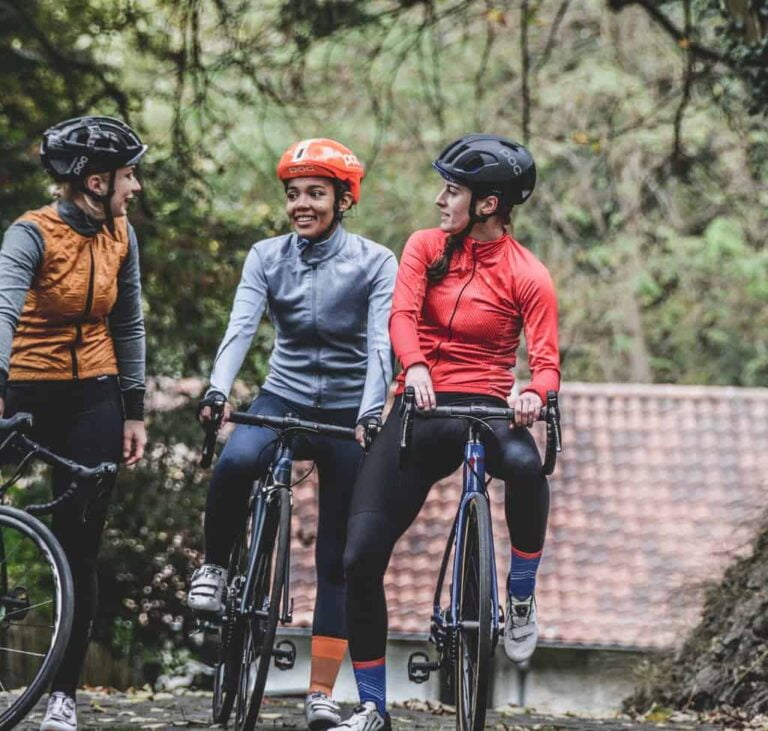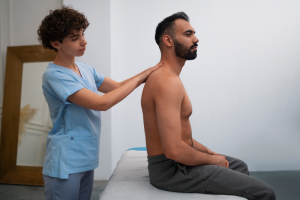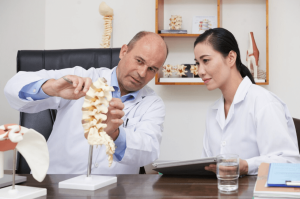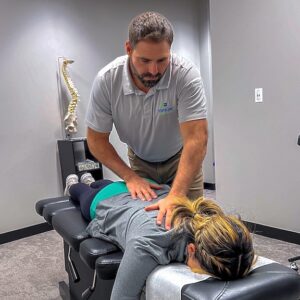It’s Summertime and we’re seeing a lot of cyclists coming into the office complaining about pain and injuries resulting from their bike fit. It’s a common complaint and one that you can definitely fix. Keep reading and we’ll tell you how.
The Biomechanics of Cycling
The study of biomechanics in people focuses on the mechanical laws relating to the movement and structure of the human frame.
Having synchronous and balanced movement with minimal stress on the muscles and joints is what prevents injury and promotes long term health. A proper bicycle fit will also set you up for increased power, which translates to endurance and reduced injury.
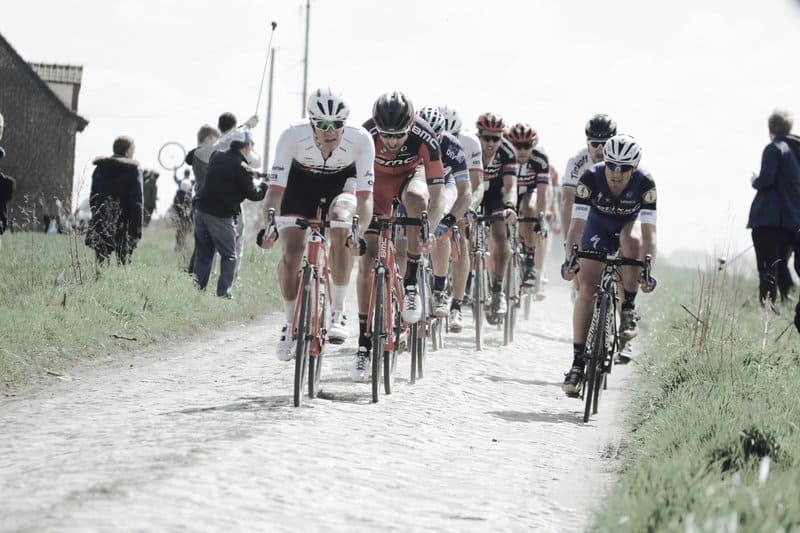
Common Symptoms and Injuries for Cyclists
Unfortunately, it is very common for cyclists to experience pain or injury from cycling. The most common symptoms in bicycling are back pain, shoulder pain, knee pain, foot pain, hand pain and groin numbness.
Many of these injuries can be reduced or avoided when employing proper cycling biomechanics.
The 5 Basic Components of Proper Cycling Biomechanics
While fitting a bicycle is unique to the individual, there are five basic components to take note of in setting yourself up for a good ride. They are:
1. Frame size
The easiest way to determine the proper frame size is with your height. This may vary though depending on what type of bike you have or want.
2. Handlebar height and tilt.
If your handlebar height is off, you may be experiencing some lower back soreness or hand pain. To avoid this, having a higher handlebar height can help.
3. Fork/Shock height and stiffness
4. Saddle height, and tilt
To find your correct seat height, you can use the heel to pedal method. You will take a seat on your bike, hold onto something to keep your balance, place your heel on the pedal, and then push your heel backwards on the pedal until you hit the six o’clock position.
While pedaling, if you find your knee still bent, you’ll need to raise the saddle height, whereas if your heel comes off the pedal, you’ll need to lower it.
5. Tire size and pressure
Your tire size will depend on what type of bike you have and the correct pressure is dependent on your weight. The pressure needs to be higher the heavier your body weight is. Having the correct pressure will also help your bike roll more smoothly and make the ride more comfortable.
To employ these five components, a bicycle shop with a good mechanic is going to be your best friend. Of course, you can try to set everything up yourself and make your own adjustments but, unless you’re very skilled in this area, it’s probably going to be much easier to use a professional.
They’ll be able to help properly fit you to the basic components and even recommend other tips and accessories to reduce shock to the joints.
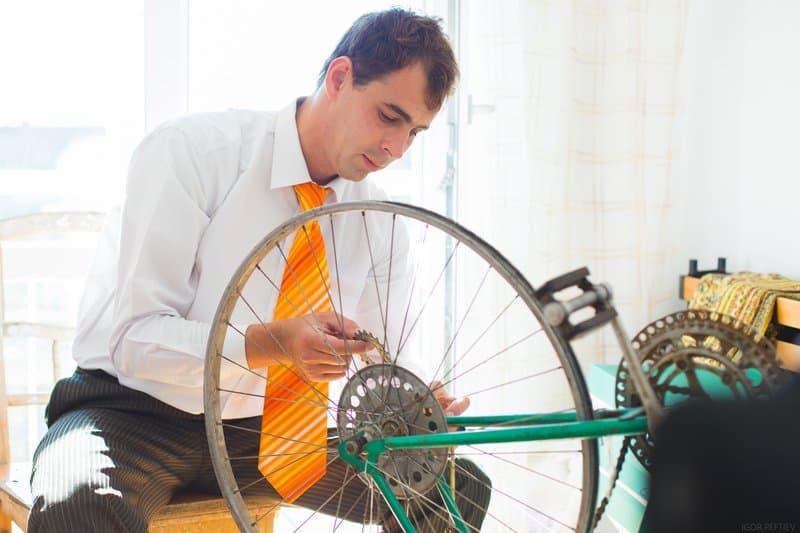
Bike Riding Recovery
When it comes to recovery, it can be hard for most of us to implement it into our routines. We know we should be stretching before and after any type of exercise, the issue is we just don’t do it. Yes, it’s an extra activity to add onto your daily “to-dos”, but the benefit you get from it is well worth the effort. This also goes for bike riding.
Stretching out prior to biking will help warm up your muscles and therefore, reduce injury, while adding in a cool down stretch will help you avoid some soreness the next day.
Fueling your body nutritionally will also help aid in your recovery. Making sure you are eating enough before and after you ride is essential, and finding something high in protein is key.
When it comes to fuel, you also want to focus on water. Any type of athletic activity will get you sweating and increase the chances of dehydration, especially a hard ride. Hydrating before, during, and after will help tremendously.
The last recovery essential is rest. As excited as you are to get out and ride this summer, overdoing it won’t do you any good. Taking a few days off and allowing your body to recover is recommended.
Just Wear the Helmet
Some people don’t enjoy the feeling of wearing a bike helmet but studies have been shown to reduce head injury by as much as 85%.
Love them or hate them, bike helmets can be the difference between a minor bump and a life threatening head injury. Even if your helmet only comes in handy once in a thousand rides, that one time is well worth any discomfort from the other 999.
Conclusion
Biomechanics is an essential part of Chiropractic and proper body function.
Along with a good bicycle fit, Chiropractic can also help you put many miles more on your favorite frame. No matter how much you stretch and manage your recovery, riding consistently puts a lot of pressure on your body.
The doctors here at Evolve have helped many patients address sports related injuries by focusing in on the biomechanics of their bodies, just like you want to with your bike.
In our offices we also have an assortment of recovery tools such as cold laser therapy, clinical massage, and kinesiology taping.
If you’d like more help with your bicycling biomechanics, consider contacting one of our offices and make an appointment for a consultation.
Now get out there and have a great ride!
-Dr Casey McGuire (Lead Chiropractor at Evolve Chiropractic of McHenry)

